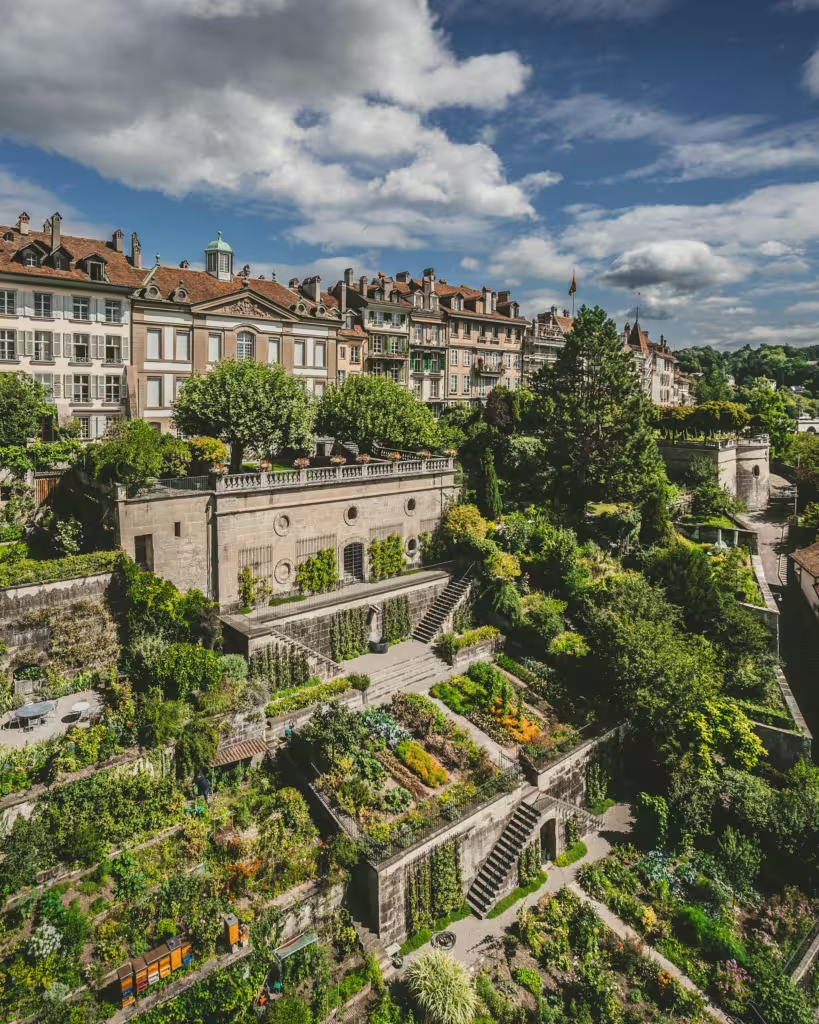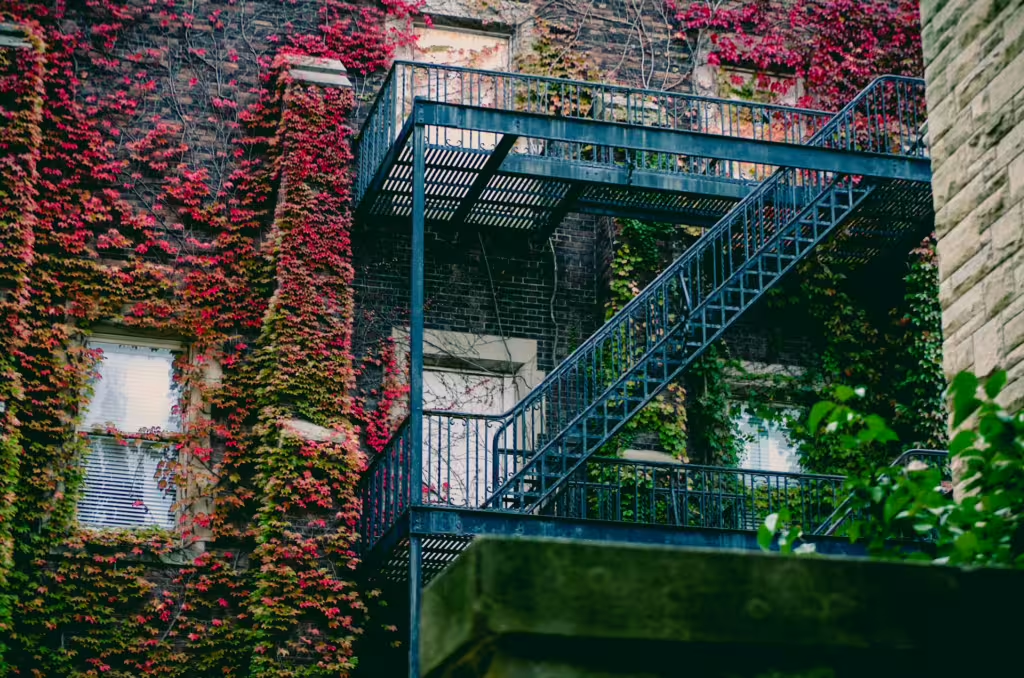Like it or not, the many cities that already festoon the ever-shrinking natural landscape of our planet aren’t going away anytime soon. If anything, the ever-increasing human population is liable to ensure that they continue to expand. The arm of the industrial age is still going strong and thus, urban landscapes are becoming more dominated by concrete and steel, leaving less and less room for nature to creep its way in.
There is a silver lining, however, as a revolutionary green solution has come about in recent years that is transforming urban environments for the better. Vertical gardening has taken many cities by storm. It is the act of integrating plants into walls, balconies, and any other vertical surfaces one can find. By implementing these types of gardening practices, cities are able to somewhat counteract the loss of natural green spaces.
In this article, we will discuss how vertical gardening not only enhances the aesthetics of urban areas but how it provides significant environmental benefits to those living nearby. We will go over all of those benefits including the improved air quality, better insulation, and increased biodiversity that vertical gardening facilitates.
The Concept of Vertical Gardening
Vertical gardening is fairly straightforward, conceptually. So much so, that it’s a wonder why no one ever thought of it before now. Truth be told, it may have been one of the main methods of cultivation for the fabled Hanging Gardens of Babylon, a wonder of the ancient world that has since disappeared from history. Sadly, we will never know the truth, but we can guess that if ancient Babylonians had gardens all over their city, they likely looked very similar to the ones we’re seeing pop up in the modern age.
Modern vertical gardening involves growing plants upwards instead of outwards, using walls, trellises, hydroponic systems, or stacked planters to enable the proper directional growth. These gardens range greatly in size. They can be small-scale domestic installations to large green walls clinging to the sides of high-rise buildings. Modern day architects, urban planners, and environmentalists are increasingly embracing the concept of vertical gardening in order to make more green spaces in urban places. The idea being that if you merge nature with modern infrastructure, you’ll wind up with something mutually beneficial. The idea is sound, but the success of vertical gardens lies in selecting appropriate plant species and ensuring proper irrigation and maintenance.

Environmental Benefits of Vertical Gardens
There are quite a few environmental benefits that come from adding a bit of greenery to the dreary urban sprawl. Moreover, those benefits aren’t just there to help out urban critters, they help human beings just as much.
Air Purification and Improved Air Quality
Readers who currently live in cities are likely quite familiar with abysmal air quality conditions that can sometimes arise. Though events and circumstances can vary, the general consensus is that urban air is often polluted with particulate matter, carbon dioxide, and other harmful pollutants. These pollutants come from a bevy of manmade sources including vehicle emissions, industrial activities, and simple human habitation.
Vertical gardens are a nice foil to this generally bad air quality, as they act as natural air filters. Plants are actually quite good at absorbing toxins, excess CO2, trapping dust, and releasing oxygen into the air. Certain plants, such as ferns, ivy, and spider plants, are particularly effective in reducing the quantity of airborne pollutants, which can then lead to healthier urban environments for everyone that lives within the city limits.
This ability of certain plants to remove volatile organic compounds (VOCs) from the air is based on evidence collected by a study by NASA. In cities where pollution levels are high, the strategic placement of green walls could significantly improve air quality, contributing to better respiratory health for residents. That said, to reduce these pollutants in a large-scale meaningful way, say for a city like New York or Shanghai, the amount of plants needed would likely be…expansive to say the least.
Climate Control and Energy Efficiency
Buildings in urban areas contribute significantly to a phenomenon known as the heat island effect. This is where concrete and asphalt absorb and radiate heat, increasing the temperature in the area by a good deal. Vertical gardens are an excellent way to cool things off a little, because the shade their leaves and boughs provides actually reduces heat absorption by the buildings upon which they have taken root. Think of it as natural insulation, which can be used to lower indoor temperatures in the summer and retain warmth in the winter. The end result is a reduced reliance on energy-guzzling, air-polluting, artificial cooling and heating systems. As a consequence, vertical gardens might even be used to help lower energy consumption across cities, cutting down on carbon emissions and energy costs for the city’s residents.
Noise Reduction
Cities are loud. Between cars, conversations, and the thousand and one other cacophonies that occur within their borders, sound pollution has remained a persistent issue in many urban areas. Green walls can help muffle sound, acting as natural barriers, and absorbing and deflecting the riotous noise. This works best when there is sufficient density and surface area of plants, however.
Increased Biodiversity
Urbanization has led to a decline in biodiversity not just in the cities themselves, but in the surrounding area as well. By replacing natural habitats with buildings and roads, we have effectively removed acres upon acres of valuable habitat, feeding grounds, and breeding grounds. Though they are hardly a solution to this somewhat insurmountable problem, vertical gardens can help restore ecological balance by providing shelter and food for birds, bees, butterflies, and other local wildlife. The key in this case is to select native plant species that the animals will be drawn to, thus creating urban green walls which then serve as microhabitats for the displaced critters.
Stormwater Management
Climate change has shown us that storms like hurricanes and tornados are becoming more and more destructive with each passing year. During Hurricane Sandy, much of New York City’s existing urban infrastructure was ill-equipped to deal with the flooding caused by rising seas and excessive rainwater runoff. These types of storm conditions have become significant concerns in cities today and they often overwhelm drainage systems and lead to flooding and significant damage. Vertical gardens might help this in many ways, as they help absorb and retain rainwater, reducing runoff and promoting groundwater recharge. In addition, vertical gardens and all urban green spaces prevent soil erosion by capturing and filtering rainwater before it reaches the ground.
Aesthetic and Psychological Benefits

Enhancing Urban Beauty
Vertical gardens are an excellent way to break up the grim, industrial sameness that dominates most cityscapes. The touch of green can soften city landscapes as seen from below, transforming dull, grey walls into vibrant, living masterpieces. Gardens add a natural element to buildings, making them visually appealing and more inviting.
Psychological Well-being
We need green spaces in order to stay sane. It’s true! Numerous studies have shown that being exposed to greenery reduces stress, enhances mood, and improves overall mental health. Vertical gardens offer an easy way for city dwellers to connect with nature, even in high-density areas. Parks and other urban green spaces already exist, and have helped many people escape from the dreariness of the concrete jungle. At the same time, green spaces are already known to encourage relaxation and enhance productivity, which is why many workplaces, hospitals, and schools already incorporate them into their architecture.
Community Engagement
Cities have featured a number of green projects, including vertical gardens, over the years. These initiatives can foster a sense of community and social cohesion among the citizenry. When residents participate in maintaining community or vertical gardens, they tend to develop a stronger connection to their surroundings and their neighbors. Giving people stewardship over a thing, enables them to be responsible, and to take pride when that thing flourishes. Moreover, community-driven green initiatives are an excellent way for communities to create opportunities for education and environmental awareness; something every citizen of the world is in dire need of.
Challenges and Considerations
High Initial Costs
One of the major challenges of implementing vertical gardens of any kind is the high initial cost they carry with them. Designing and installing a green wall is not an easy or cheap process. It requires specialized materials, irrigation systems, and maintenance structures; all of which need to be sized up to meet the needs of the city and the buildings in question. The point is, there many variables to consider and each of them has a cost associated with them.
The thing is, what most city planners and pinchpenny governments don’t realize is that these costs can actually be offset over time through energy savings and increased property values. The long-view is often hard to see for these types, however. In addition, there is also an added layer of beuqacratic red tape that must be considered when installing a vertical garden, as obtaining necessary permits and approvals may add to initial financial outlays. Despite these barriers, many property owners have begun to view vertical gardens as long-term investments that enhance aesthetic appeal, improve air quality, and provide insulation benefits.
Maintenance Requirements
Unlike traditional gardens, vertical gardens are a little more difficult to maintain. The vertical and highly-technological nature of the gardens themselves necessitate careful maintenance of the underlying structures, not to mention the regular watering, pruning, and pest control that need to be taken into consideration. Automated irrigation systems can simplify upkeep, but unsurprisingly, these contrivances add to the initial expense. One of the best ways to circumvent these maintenance concerns is to choose low-maintenance plant species can also help reduce long-term maintenance efforts.
In terms of system maintenance, routine inspections are necessary to check for plant health, ensure the irrigation system functions properly, and prevent structural damage from the excessive moisture that plants take into themselves. In urban environments, everything from pollution and varying weather conditions can impact plant growth, which would then require additional care and periodic replacements. So yes, there are considerations that need to be made.
Structural Integrity and Space Constraints
One thing that folks forget to consider is that bot all buildings are suitable for vertical gardens. Factors such as load-bearing capacity, sunlight exposure, and climate conditions all need to be considered before installing anything on the side of a building full of offices, people, or factory equipment. This is why proper planning and expert consultation are essential. Expert architects and city planners are able to size things up properly, utilizing their expertise to ensure the success and longevity of a green wall and the building walls beneath it.
For example, an architect might notice that the wall the garden is to be built upon is in need of extra support. That way, it can accommodate the weight of soil, water, and plant materials without suffering under the added weight. Furthermore, urban environments with limited space necessitate creative design solutions, such as modular panel systems or hydroponic setups, to maximize efficiency.

Future Prospects and Innovations
By now, we have seen many new advancements in hydroponic and architectural technology. These advances are making vertical gardening more feasible and more efficient. These elements make vertical gardening more adoptable by cities who may have opted out for fear of cost or complication. Innovations such as smart irrigation systems, self-sustaining hydroponic gardens, and AI-driven plant monitoring are already addressing many of the challenges associated with vertical gardens. Many cities worldwide are beginning to see the value of green infrastructure, and policies encouraging vertical gardening are becoming more prevalent all the time.
True Investigator Says…
As you can see, vertical gardening is an innovative and sustainable solution that many urban centers would do well to consider. Not only does vertical gardening present simple, elegant solutions to many urban environmental challenges, they are easier and easier to incorporate into existing infrastructure. Green walls are a powerful tool for transforming city life in that they improve air quality, improve mood, and improve the lives of the humans and animals that call the city home. While there are challenges associated with cost and maintenance, ongoing advancements in technology and increasing public awareness have reframed the debate over whether or not such gardens are strictly “worth the trouble.” The answer, thankfully, is an emphatic yes from many city planners and governments the world over.
Discover more from TrueInvestigator
Subscribe to get the latest posts sent to your email.


